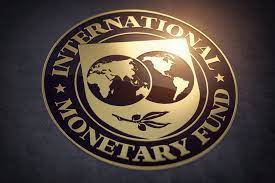In its recent World Economic Outlook (WEO) update, the International Monetary Fund (IMF) has revised India’s growth projections for the fiscal years 2024-25 (FY25) and 2023-24 (FY24), reflecting optimism fueled by robust domestic spending and an improved global economic landscape.
For FY25, the IMF raised India’s growth forecast by 20 basis points (bps) to 6.5%, acknowledging the positive impact of buoyant domestic spending and more favorable global growth prospects. While this adjustment signifies a positive outlook, it falls short of the Ministry of Finance’s (FinMin) projection of 7%, highlighting a notable variance in expectations.
Similarly, the IMF’s upgraded estimate for India’s FY24 growth stands at 6.7%, indicating a 40 bps increase from its previous October report. Despite this positive adjustment, the IMF’s projection remains below the 7.3% growth forecasted by the National Statistical Office earlier in the same month. This discrepancy suggests a divergence in assessments between international financial institutions and domestic statistical bodies.
The variance in growth projections raises questions about the factors influencing these assessments and the potential challenges ahead. The buoyancy in domestic spending, as noted by the IMF, underscores the resilience of India’s economic activity. However, understanding the disparities between international and domestic projections requires a closer examination of underlying assumptions, policy considerations, and external factors impacting the economic landscape.
About India’s Growth Outlook for FY24-25
It is essential to recognize that economic forecasting involves inherent uncertainties, and multiple factors contribute to divergent projections. Global economic conditions, geopolitical events, and policy decisions can all play pivotal roles in shaping a country’s economic trajectory. As India navigates a complex economic landscape, policymakers and analysts must carefully consider these dynamics to formulate effective strategies for sustainable growth.
While the IMF’s upward revisions indicate a positive trajectory, the disparities in growth projections emphasize the need for continued vigilance and adaptive policy measures. Collaborative efforts between international organizations, national institutions, and policymakers can help align projections more closely and foster a shared understanding of the economic landscape.
IMF’s upgraded growth projections for India signal optimism driven by domestic resilience and improved global conditions. However, the variances between international and domestic forecasts underscore the complexity of economic assessments and the importance of considering multiple factors influencing growth. As India charts its economic course, a nuanced and collaborative approach will be crucial to navigate uncertainties and promote sustained and inclusive development.

